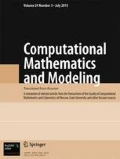Blind image separation is a method of recovering the original images from a set of image mixtures, with no information about the source images or about the mixing process. Blind source separation problem has been used to extract sources from one-dimensional mixture signals such as speech, whereas, application of source separation for images (two-dimensional signals) has been examined to a limited extent. The independent component analysis (ICA) method assumes statistical independence of the source signals and at least one of the source could be non-gaussian. These assumptions do not hold for image mixing conditions. An alternative approach is to use Kalman filter that operates on the noisy input data recursively to produce statistically optimal estimate of the underlying sources. In this paper, a robust filter on H-infinity norm is proposed and compared with for image separation of Kalman filter. The extension of the algorithms to a simple and block based approach wherein the image mixture is converted to a sparse representation is proposed. The image mixture is subdivided into blocks of known sizes and the sparseness of each block is measured using l_0 norm and the block with maximum sparseness is used for extraction of original sources. This reduces the computational complexity that exists with the large dimensions of images. The algorithms are validated for natural image data sets and also for window reflection images taken under different lighting conditions. The analysis results suggest that the proposed methods provide significantly good quality of separation as measured by the performance metrics.
Similar content being viewed by others
References
A. J. Bell and T. J. Sejnowski, “An information-maximization approach to blind separation and blind deconvolution,” Neural Computation, 7, No. 6, 1004–1034 (1995).
É. Moulines, J.-F. Cardoso, and E. Gassiat, “Maximum likelihood for blind separation and deconvolution of noisy signals using mixture models,” in: Proc. ICASSP’97 Munich, Vol. 5 (1997), pp. 3617–3620.
A. Hyvarinen, J. Karhunen, and E. Oja, Independent Component Analysis, Wiley, New York (2001).
C. Jutten and J. Herault, “Blind separation of sources, part I: An adaptive algorithm based on neuromimetic architecture,” Signal Process, 24, 1-10 (1991).
M. Girolami, “An alternative perspective on adaptive independent component analysis algorithms,” Neural Computation, 10, No. 8, 2103–2114 (1998).
A. Hyvärinen and E. Oja, “Independent component analysis – algorithms and applications,” Neural Networks, 13, No. 4-5, 411–430 (2000).
M. Zibulevsky and B. A. Pearlmutter, “Blind source separation by sparse decomposition in signal dictionary,” Neural Computation, 13, No. 4, 863–882 (2001).
M. M. Bronstein, A. M. Bronstein, M. Zibulevsky, and Y. Y. Zeevi, “Separation of reflections via sparse ICA,” in: Proc. International Conference on Image Processing ICIP, Vol. 1, September (2003), pp. 313–316.
M. Jyothirmayi, E. Kuzhali, and S. Sethu Selvi, “Blind source separation using Hessian evaluation,” Intern. J. Image Processing (IJIP), 6, Issue (4), 208–219 (2012).
Y. Li, A. Cichocki, Sh. Amari, and S. Shishkin, Sparse Representation and Its Applications in Blind Source Separation, NIPS (2003).
W. Souidene, A. Aïssa-El-Bey, K. Abed-Meriam, and A. Beghdadi, “Blind image separation using sparse presentation,” in: Proc. IEEE International Conf. on Image Processing ICIP, Vol. 3, September (2007), pp. 125–128.
V. K. Ananthashayana and M. Jyothirmayi, Blind Source Separation Using Modified Gaussian ICA, at ICSPCN 09, Singapore Conference.
M. Jyothirmayi, E. Kuzhali, and S. Sethu Selvi, “Blind image separation using forward difference method (FDM),” Signal & Image Processing: An International Journal (SIPIJ), 2, No. 4, December (2011), pp. 121–127
Welch& Bishop, An Introduction to the Kalman Filter, ACM Siggraph 2001, Course-8, page 20–34, August 12-17 (2001).
M. G. Jafari, H. W. Seah, and J. A. Chambers, “A combined Kalman filter and natural gradient algorithm approach for blind separation of binary distributed sources in time-varying channels,” in: 2001 IEEE International Conf. on Acoustics, Speech, and Signal Processing, Vol. 5, May (2001), pp. 2769–2772.
Qi Lv, Xian-Da Zhang, and Ying Jia, “Kalman filtering algorithm for blind source separation,” Vol. 5, 257–260, IEEE, ICASSP (2005).
J. Karhunen, P. Pajunen, and E. Oja, “The nonlinear PCA criterion in blind source separation: relations with others approaches,” Neurocomputing, 22, 5–20 (1998).
X. L. Zhu and X. D. Zhang, “Adaptive RLS algorithm for blind source separation using a natural gradient,” IEEE Signal Processing Letters, 9, 432–435 (2002).
Niva Das, Aurobinda Routray, and Pradipta Kishore Dash, A Robust H∞ Learning Approach to Blind Separation of Signals, Digital Signal Processing, Elsevier, July (2009).
Babak Hassibi, Ali H. Sayed, and Thomas Kailth, “H∞ optimality of LMS algorithm,” IEEE Transactions on Signal Processing, 44, No. 2, February (1996).
J. F. Cardoso. “Infomax and maximum likelihood for blind source separation,” IEEE Signal Processing Letters, 4, No. 4, 112–114, April (1997).
D. Donoho, M. Elad, and V. Temlyakov, “Stable recovery of sparse overcomplete representations in the presence of noise,” IEEE Trans. Inf. Theory, 52, No. 1, 6–18, Jan. (2006).
Z. Wang, A. C. Bovik, H. R. Sheikh, and E. P. Simoncelli, “Image quality assessment: From error measurement to structural similarity,” IEEE Transactios on Image Processing, 13, No. 1, Jan. (2004).
A. Kraskov, H. Stögbauer, and P. Grassberger, “Estimating mutual information,” Physical Review E, 69, 066138 (2004).
M. Jyothirmayi and S. Sethu Selvi, “Block based Kalman filter algorithm for blind image separation using sparsity measure,” 2017 IEEE International Conference on Power, Control, Signals and Instrumentation Engineering (ICPCSI), to be Published in IEEE.
Author information
Authors and Affiliations
Corresponding author
Rights and permissions
About this article
Cite this article
Jyothirmayi, M., Selvi, S.S. & Dinesh, P.A. A Comparison of Block Based Kalman Filter and H-Infinity Algorithms for Blind Image Separation. Comput Math Model 32, 339–355 (2021). https://doi.org/10.1007/s10598-021-09535-w
Published:
Issue Date:
DOI: https://doi.org/10.1007/s10598-021-09535-w




